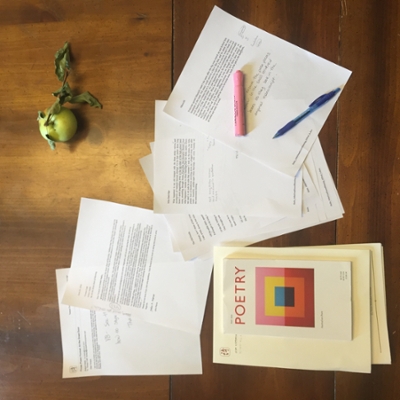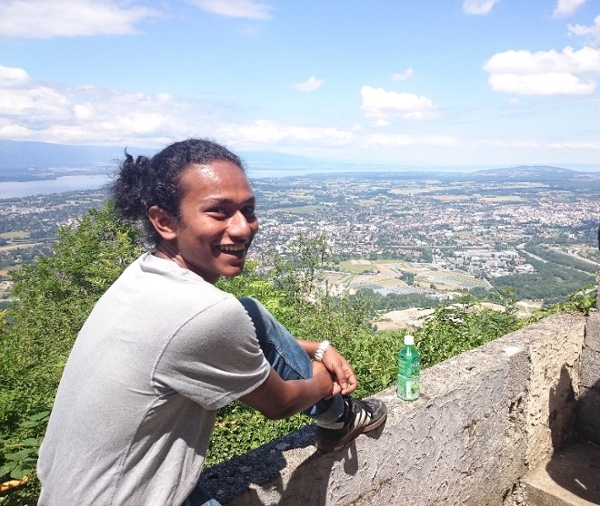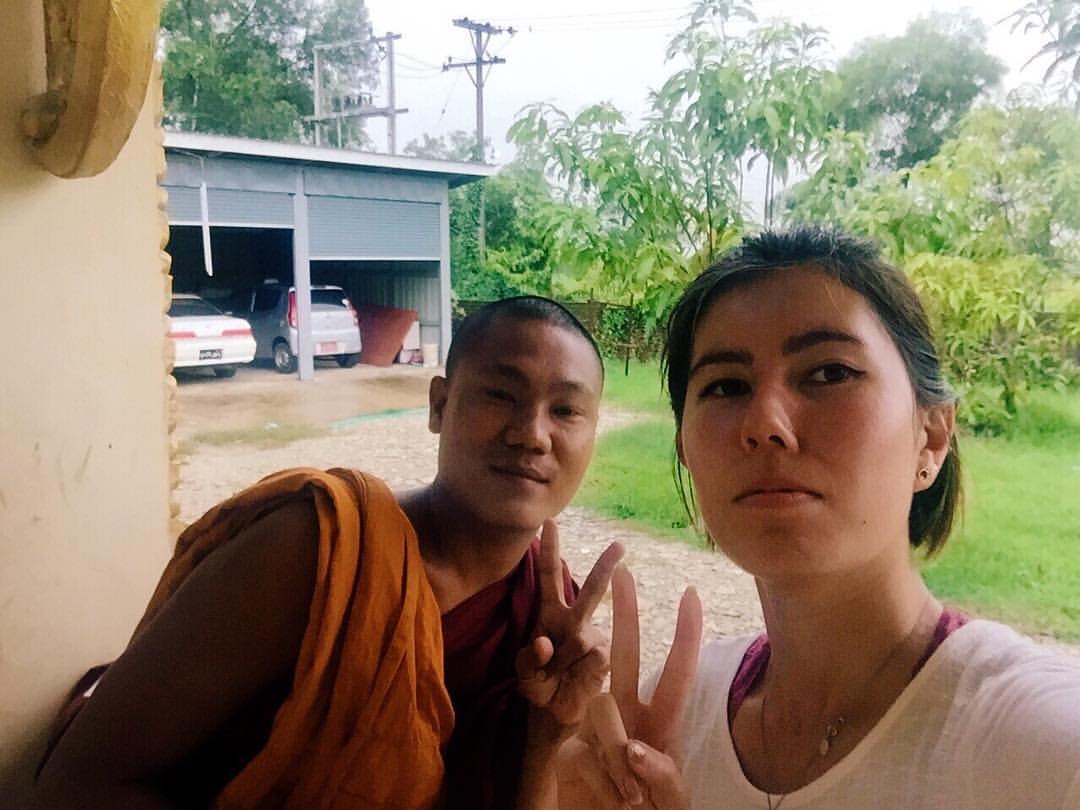Five Things You Need to Know About Interning in Barcelona
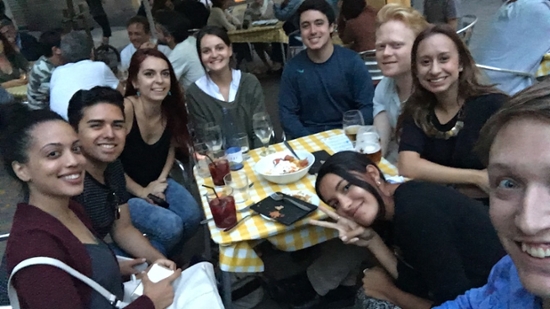
Taking some time for tapas with the rest of the Adelante Abroad squad! During the first week of the program, we met up together to talk about our different internship and to get to know one another.
Over the summer, I went to Barcelona to fulfill an internship through the intern abroad company Adelante Abroad. This experience was beyond anything I could have imagined, and went far beyond what I planned; what had started as a proposed legal internship in immigration turned into working with an associated client, Casal Lambda, an LGBT Catalunyan organization (more on that below). Not everything is going to be how you expect when you go abroad, so here are FIVE things you need to know about your time spent in Barcelona!
The people of Barcelona, a city within the Province of Catalunuya, take immense amounts of pride in the differences between their culture and language and other Spanish cultures, particularly Castellano. What Americans typically know as Spanish is actually of the Castellano dialect of Spain (often mixed with other dialects depending on location). Barcelona and citizens of Catalunya proudly speak Catalán as a first language, which sounds like a mix between Spanish and French. If you don’t know Catalán, people are actually more likely to speak to you in English than Catalán. As an intern that had never been exposed to the culture and only spoke Spanish, this was a bit jarring at first. It took a while to really understand the differences, and also to pick up some understanding of the language. My internship ended up being associated very strongly with the Catalán culture, and so Catalán was spoken frequently around me. Castellano was spoken on request, but was somewhat looked down upon. This was constructive though, as it allowed me to both come into a greater understanding about a society I had never been as well as attain a larger grasp on the language.
Continue reading Five Things You Need to Know About Interning in Barcelona
Summer Internship Award: CRAL Astrophysics Lab in Lyon, France

CRAL Observatory in Saint-Genis-Laval, France
For two months this summer I worked at the CRAL (Astrophysics Research Center of Lyon). The observatory is located in Saint-Genis-Laval, a town right outside of Lyon, France. The observatory is small but has a lot going on, and is also up the steepest hill I’ve ever had to walk. I started looking for summer work by sending emails to various people at institutions all over Europe who I thought was doing interesting work in computational astrophysics. I started by emailing The Swiss National Supercomputing Center (CSCS) where I thought I could learn a good amount of the basics. They were only allowed to accept Swiss students, but hearing a response at all made me feel encouraged and kept me going. Two weeks into this process I found a list of internships available on CRAL’s website, and sent my boss, Jérémy Blaizot, an email. The internships were in numerical astrophysics, which interested me because of coursework I had done at Reed in Physics and in Computer Science. My request for summer work was apparently one of the weirdest and out of the blue emails he had ever received, coming from someone in an unheard of place in Oregon who was very intent on learning numerical astrophysics for galaxy formation, so he figured he might as well say yes.
My research aimed to speed up part of a radiative transfer simulation code. In a given area within the simulation, a photon might scatter many times, something that is 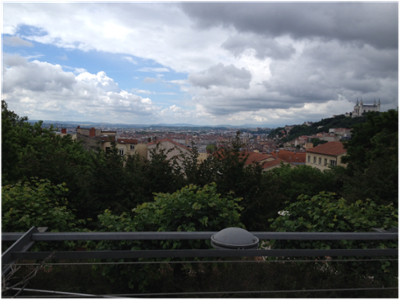 computationally expensive. A way to speed this process up is to have a probability distribution function for the photon after it scatters, or try to approximate one. Initially, I tried working towards an analytic solution for the problem, but then moved to various numerical techniques. I was amazed when everything I was doing somehow built on things I had learned in my two years at Reed. The physics for Monte Carlo Radiative transfer was a natural extension of material learned in Physics 202, and the math and computer science courses I had taken at Reed also allowed me to learn new material in an effective way.
computationally expensive. A way to speed this process up is to have a probability distribution function for the photon after it scatters, or try to approximate one. Initially, I tried working towards an analytic solution for the problem, but then moved to various numerical techniques. I was amazed when everything I was doing somehow built on things I had learned in my two years at Reed. The physics for Monte Carlo Radiative transfer was a natural extension of material learned in Physics 202, and the math and computer science courses I had taken at Reed also allowed me to learn new material in an effective way.
I learned a lot academically, but I also got a lot more out of the experience. On my way to France, I started freaking out that I didn’t know anyone or didn’t speak the language. However, as soon as I landed I started feeling better. Everyone I met was so wonderful and the overall environment was great for me since I was able to really focus on something I loved while getting a new experience of living abroad. The person I stayed with for two months, Marie, helped me learn enough French to make basic conversation, and was always giving me great advice for what to do in Lyon. I must have gone to almost every museum twice, but the highlight was when during my last week a friend came to visit me and insisted we go to the film prop/miniatures museum, which I thought I would hate but wound up loving. I also tried “toasted bread” ice cream, which I can definitely say changed my life for the better.
Continue reading Summer Internship Award: CRAL Astrophysics Lab in Lyon, France
Summer Internship Award: Effects of predation on microhabitat selection of Aedes Aegypti

Asian Tiger Mosquito Larvae - infinitespider.com
The university I worked at this summer, the Indian Institute of Science, is situated on one of the last tracts of most deciduous forest that once covered the city of Bangalore. The disparity between the lush surroundings I worked in and the bare concrete of the rest of the city was a daily reminder of the importance of studying ecology in modern India.
At IISc, I worked with Dr. Kavita Isvaran at the Centre for Ecological Sciences. Dr Isvaran works on several wide-ranging aspects of evolutionary ecology, such as mate choice behaviour and the impacts of invasive plants. Our project focused on how ecological context drives adaptations in prey organisms while encountering predators. Our study system was Asian Tiger Mosquito (Aedes aegypti) larvae, a species that is a vector for several debilitating tropical diseases like dengue, chikungunya and yellow fever. Understanding the mechanisms they have evolved to deal with predators is important for vector control measures that aim to decrease populations.
Continue reading Summer Internship Award: Effects of predation on microhabitat selection of Aedes Aegypti
Summer Internship Award: Performing Arts Intern for Portland Institute for Contemporary Art

My Intern All Access pass and the ever-important walkie talkie used for calling the shows on opening weekend.
September 08, 2016: Opening night of PICA’s 14th Annual Time-Based Art Festival. 1 Opening Night Dinner. 2 Artists’ performances. 11 hours of work.
I was exhausted, but the countless hours throughout the summer that I had spent preparing for this moment were finally manifested into the premiere of the vibrant festival to come. TBA is a 10-day citywide arts festival taking place here in Portland with stage performances; visual installations; film screenings; dialogues, panels, and workshops with artists; and late-night dance parties. TBA features artists from a plethora of cultures, backgrounds, and mediums with an astounding 57 shows, 15 dialogues and panels, and 6 workshops throughout the 10-day festival. From dancers to jugglers to DJs, there really was something for everyone. Thirty-three artists and groups came to us from around the world even beyond the US, including Lebanon, South Korea, Bulgaria, and France. TBA took over Portland by taking place at venues ranging from the Portland Art Museum, to Portland State University’s Lincoln Hall, to the Winningstad Theatre, and (for the first time ever) Reed College. Throughout the summer, my primary jobs included obtaining work visas for international artists, creating contracts for their performances, and creating endless spreadsheets and itineraries of all their travel and performance dates.
Staff meetings tripled in size by the end of the summer. I went from working with 10 other people at my own desk to sitting in a makeshift office in what used to be a 16,000-square-foot indoor skatepark. Several of my days throughout the summer felt the same: spending 5-6 hours researching an artist trying to prove they are world-renowned in order to obtain a work visa, consolidating 5 spreadsheets into one beautifully color-coded spreadsheet, researching flights for all of the artists, or confirming travel dates and browsing nearly every Airbnb in Portland. A LOT of work goes into planning a festival with hundreds of attendees per night, which I knew, but I guess I didn’t realize that actually getting to work with and communicate with artists didn’t come until they were actually on the ground in Portland. I was excited for this internship because I wanted to see what happened behind the scenes of all the excitement, and I definitely did get that chance.
In the weeks leading up to the festival, and especially once it began, things started to pick up. Instead of working at my computer, I started running errands. I was told a few hours before opening night that Juliana Huxtable, a DJ from New York, requested fresh ginger and honey for her tea. I walked to New Seasons, walked back, and stood in the kitchen grating ginger for her while soundchecks and setups in the venue were happening in the background. “Wow, I guess this is really what it feels like to be an intern,” I remember thinking to myself. Being an intern meant waiting at the airport with two of your friends for a Bulgarian only for him to walk past you because he was “looking for someone who looked like a driver.” Being an intern meant driving him to his hotel and helping him carry all of his bags to his room, then turning around to go back to the airport because another artist was arriving at 11:00pm that night.
The highlight of my entire internship was getting the opportunity to work with Narcissister, a Brooklyn-based 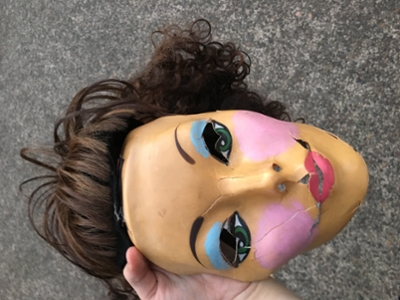
Continue reading Summer Internship Award: Performing Arts Intern for Portland Institute for Contemporary Art
Summer Internship Award: Clinton Foundation

Former POTUS, Bill Clinton, and Gabriel Richardson '18
For the length of three months this summer, I was given the incredible opportunity to work at the Clinton Foundation. At the active nonprofit, I had the occasion to work with a set of diverse and motivated individuals impassioned in serving their international community with innovative solutions. My intern colleagues came from a range of countries including the United States, the United Kingdom, France, Colombia, Haiti, Mexico and Canada. Many had different academic backgrounds with degrees relating to Law, Political Science, Public Policy, Social Work, and Government, which added value in developing creative solutions to any issue. At the Foundation, I worked through the Scheduling Office alongside many other distinct teams spread throughout three main offices in Little Rock, Arkansas; Midtown, Manhattan; and Harlem, New York. I mainly worked in President Clinton’s personal office located in Harlem and occasionally worked at the Foundation’s headquarters in Midtown.
Having the chance to become part of a pioneering community that focuses on sustainable charitable solutions was an essential reason for which I applied to the organization. The Foundation has pursued its mission of empowering the underserved through partnerships with governments, the private sector, other foundations, and philanthropists, creating networks of cooperation that are focused on results. The goal of the organization is to offer expertise and resources to self-empower individuals across the globe. An example I observed of a sustainable program at the Foundation was the continued development of CHAI (Clinton Health Access Initiative). In this initiative, individuals< 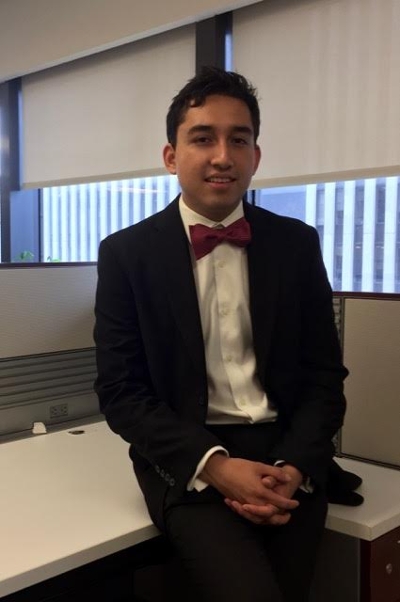 with medical and government backgrounds worked together to organize and train thousands of healthcare workers as part of an effort to address critical shortages in poor countries and help others build strong, self-sufficient health systems, and expand access to high-quality, low-cost treatment and diagnostics for many other diseases and conditions. Through such proactive methodology, the Foundation’s efforts have improved millions of lives around the world and has tackled problems relating to AIDS/ HIV, accessible healthcare, sustainable investment, climate change, and small business development.
with medical and government backgrounds worked together to organize and train thousands of healthcare workers as part of an effort to address critical shortages in poor countries and help others build strong, self-sufficient health systems, and expand access to high-quality, low-cost treatment and diagnostics for many other diseases and conditions. Through such proactive methodology, the Foundation’s efforts have improved millions of lives around the world and has tackled problems relating to AIDS/ HIV, accessible healthcare, sustainable investment, climate change, and small business development.
Although the Scheduling Office does not directly involve program design and groundwork, the duty of the Office is essential to the daily functioning of the organization. As former White House Scheduling Director and the current Executive Director of the Clinton Presidential Library at the Foundation, Stephanie Streett, likes to mention, “it is really where the rubber hits the road.” Schedulers are in charge of placing ideas, communication, and resources into action within any organization. Within the Foundation, without the knowledge of the initiatives, people, and programs involved, one could not carry out an effective job. Prior understanding of the challenges faced and those who are able to confront these obstacles is necessary in a position of making successful connections and effective organization.
As a Scheduling Intern, I personally ensured all incoming invitations and scheduling events for President Clinton were databased and responded to, under the supervision of the Scheduling Correspondence Assistant. I also had the opportunity to assist in the compilation of data and information, and assist in the maintenance of various databases; ongoing lists for Foundation senior staff; scheduling archives; and file systems. Throughout the internship term, I met with Foundation officials to receive career advice and exchanged conversations relating to political work, legal services, and government management with several other team-workers. The internship organizers met with individual students to develop career skills and encourage full involvement as essential staff within the Foundation.
After the term, I observed that my writing and communication skills were better developed and that my attention to detail greatly improved due to the particularities of my position. Speaking with professionals gave me insight on my possible future career paths after Reed. My supervisors encouraged me to research fellowship opportunities and consider graduate studies relating to international and human rights law. Dr. Donna Shalala, the Foundation’s current President, encouraged interns to consider service driven opportunities such as the Peace Corps; she taught in Pre- Revolutionary Iran under this government organization. Many perspectives were instilled on the interns and I came out of the experience with a better global understanding and skill-set for any future endeavors.
This extraordinary opportunity would not have been possible without the generous award received by the Center for Life Beyond Reed and all the assistance offered by the Center’s Staff. In addition, I would like to extend my gratitude for the support and recommendations received by Professor Darius Rejali, Professor Morgan Luker, Professor Diego Alonso, and Jolie Griffin, along with Political Science Department.
Continue reading Summer Internship Award: Clinton Foundation
McGill Lawrence: White Bird Legacies

White Bird worker in one of the CAHOOTS mobile crisis unit vans. (Photo from White Bird Archives, 1975)
I’m writing this as I’m coming to the end of my internship at White Bird, a multi-department crisis clinic in Eugene, Oregon. Founded in the late ‘60s as a response to droves of tripping hippie kids who descended on the town following the Grateful Dead and Ken Kesey (more or less), the clinic’s evolved over the years along with the population they work with. (Which, for three hopefully sunny and revel-filled days in May locally known as “Renn Fayre”, is the Reed community. If you’ve ever had a bad trip/sunburn/mental health crisis and been brought to a white tent between the SU and Eliot, you’ll recognize White Bird’s rock medicine department.) From a collection of cohabitating volunteers who provided 24 hour crisis service to trippers and street kids into an ever growing “collective of collectives,” White Bird has grown to be something of a household name in Eugene and continues to strive actively to improve and expand its services while retaining its status as a collective.
Continue reading McGill Lawrence: White Bird Legacies
Summer Internship Award: Learning at Saturday Academy
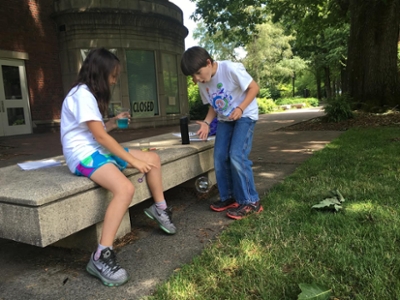
Saturday Academy students learn the science of bubble blowing outside of the Paradox Lost during the annual 4th and 5th grade Talented and Gifted camp, held on Reed campus!
I spent my summer as an intern for the Saturday Academy, a non-profit organization that offers hands-on classes, camps, and apprenticeship experiences for youths in Oregon and southwest Washington. The ten weeks I spent with the Saturday Academy involved observing and facilitating its summer offerings as well as assisting in its behind-the-curtains operations at their office in the University of Portland. I came to this internship thinking it would make a worthwhile use of my math and science background as well as give me preliminary experience in teaching. However, it was a experience with much more variety than that. The task of finding a specific anecdote to illuminate a larger lesson I learned this summer is pretty tough actually.
I did enjoy some opportunities to be a math major for the Saturday Academy. For a programming class I taught a miniature lesson on modular arithmetic to help students understand the “mod” function in their coding language. During an algebra prep course, I had to explain myself a little after nominating a seemingly erroneous candidate for a favorite number, “e”. But I think the more rewarding parts of the internship came from the moments where I had little use for math. Based on the textbooks I’ve read, no theorem deals with LEGO sorting and no corollary presents a surefire method of keeping children out of areas populated with hornets.
Continue reading Summer Internship Award: Learning at Saturday Academy
PSF: A Day in the Fish Lab

Enter my lair... This is the door to one of the rooms my tanks were in, with a daily tasks list so I don't forget anything!
As part of the President’s Summer Fellowship program, I spent my summer in a lab at the University of Alberta in Edmonton, AB, Canada. My project there was to breed adult fish and raise the fry in different pH conditions (neutral and acidic) in order to investigate the mechanisms of this species’ pH-influenced sex determination. I took fry from each family for DNA and RNA samples three times during the first two months of development to produce a timecourse view of the changes that take place in the young fish. While working on my own project, I also helped take care of the fish stocks and fish for other experiments in the lab.
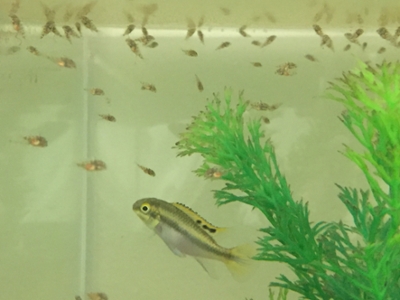 I’ve been exchanging letters with a friend who is working on a farm this summer, and in his last letter he said something that made me think: that every job has its unusual tasks, which other people wouldn’t necessarily know about or think of. His comment made me think about all of the things I do every day, which I knew very little about before I started working in a research lab studying fish. With that in mind, here’s a brief “day in the life” of a fish lab:
I’ve been exchanging letters with a friend who is working on a farm this summer, and in his last letter he said something that made me think: that every job has its unusual tasks, which other people wouldn’t necessarily know about or think of. His comment made me think about all of the things I do every day, which I knew very little about before I started working in a research lab studying fish. With that in mind, here’s a brief “day in the life” of a fish lab:
Continue reading PSF: A Day in the Fish Lab
PSF: History and Memory in Southwest Ireland

Isabel in Kilarney
The Kalem Company, which made nearly thirty silent films in Ireland from 1910 to 1915, was one of the first American film companies to shoot abroad, and the first to make silent fiction films in Ireland. In movies like The Lad from Old Ireland and The Colleen Bawn, Kalem director Sidney Olcott and his crew enacted stories of brave immigrants abroad and historic rebellions at home in scenic County Kerry.
Olcott and the rest of the company chose Beaufort, also in Kerry, as the base for their operations. Beaufort was also the hometown of Christie Sullivan, my great-grandmother. I came to Ireland this summer with the dual intention of researching and writing about life in Ireland during the early 20th century, when Christie was young and before she immigrated to the United States, and of investigating the Kalem company and filmic representations of Ireland by American filmmakers.
In County Kerry, I visited the Kerry Library’s Local History room, where I read issues of The Kerryman and other local newspapers from 1908 (the year Christie was born) to 1924 (the year she immigrated). I looked through folders full of photographs of the towns of Beaufort and Killarney. I walked the Gap of Dunloe, saw Kate Kearney’s cottage-turned-tavern, and stopped by the Muckross Estate. I visited Ross Castle, the former home of the Earl of Kenmare, converted into a tourist destination in the 19th century. All these places figured in Kalem films, and Kalem actress and scenario writer Gene Gauntier mentions them in her memoir. I peeked into the Beaufort Bar where the Kalem company stayed while in Ireland. Christie likely knew these places, and she likely heard stories of the Kalem visits from locals who had known the company, perhaps even acted as extras in their films.
Continue reading PSF: History and Memory in Southwest Ireland
McGill Lawrence: Making Science Fun for All
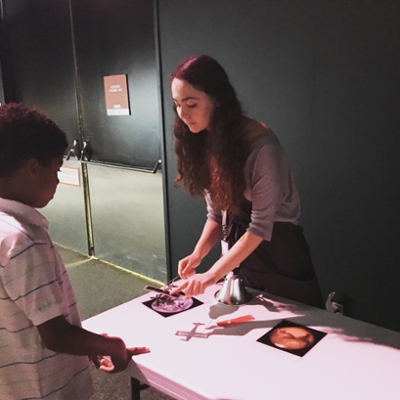
This summer with the support of the McGill Lawrence Award, I had the opportunity to work with the science education staff at Portland’s own Oregon Museum of Science and Industry . As a Science Education Intern, it was my job not only to manage volunteers, maintain safety and coordinate with other parts of the museum, but also to act as an educator myself.
At the beginning of my internship, I thought of teaching as a challenge to prove ideas and concepts to my students. When I used this teaching style, a handful of students would walk away being able to recite a few facts I had given them, but overall it did not seem like many visitors had learned something valuable. As I progressed in my internship I learned that effective teaching is not about reciting a monologue, rather creating a dynamic conversation. Every students wants to, and can discover on their own and it is my role as an educator to guide a student to their own understanding.
During my time at OMSI I developed a few tricks to engage students:
1. Watch and listen. If you pay attention, most students will show you how they want to learn. Some students want to talk and do not want to listen to a single word you say. These students, are often better engaged by questions. They want to tell you what they see and what they think! Other students, however, are absorbers. They want to know a little about what they’re looking at before they try to understand how it works. For these quieter students, asking too many questions can feel like a quiz, and end up deterring them from staying to learn. It is my job as an educator to understand how each student will best be engaged, and to adjust my teaching style to fit an individual.
Continue reading McGill Lawrence: Making Science Fun for All
Summer Internship Award: Community Work in Cape Town
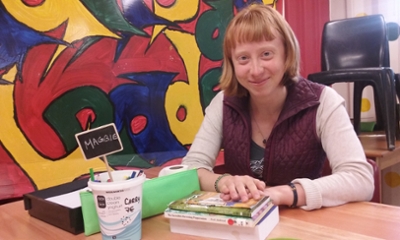
“Where is Nomuhle?”
I was stressed. I was in the middle of organizing meal logistics for a weekend camp, and it was Thursday with roughly 24 hours to go. My head was swimming with “4 kilos of chicken,” and “Who will really show up for a breakfast shift at 7:30.” But for one hour I was supposed to go and meet Nomuhle in the township (she’s a community coordinator). Ten minutes late already, I fast-walked from our office: out past the tall barbed wire fence that runs around it, over the piles of stray litter that mark the edge of the township, and through the township streets to the Ubuntu4All container.
Continue reading Summer Internship Award: Community Work in Cape Town
McGill Lawrence: Research and Training Program at SUFE
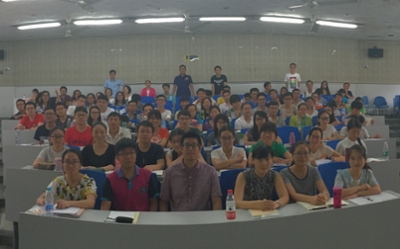
Daily economics class as SUFE, Shanghai.
In the past summer, I spent two months at the research and training program at Shanghai University of Finance and Economics (SUFE). The education of economics has undergone significant reform during the past thirty years in China -- students used to study the political philosophy of economics, whereas 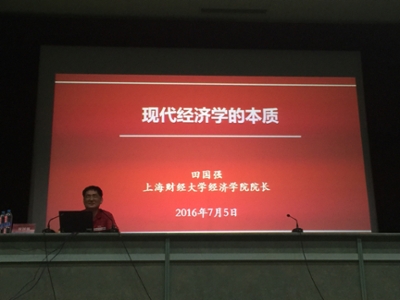
For four weeks during the program, I took advanced microeconomics and advanced econometrics classes, which were taught by Professor Du Ninghua and Professor Tao Ji, respectively. Professor Du obtained his doctoral degree from University of Arizona, and Professor Tao from Ohio State University. Both classes were taught at a graduate level and each had forty hours of teaching within four weeks. Although it was quite difficult to master all the class material under such an intensive teaching style, it was really worthwhile because the classes allowed me to have a clear sense of what I will encounter in my future study and they reminded me again of the importance of mathematics in the field of economics.
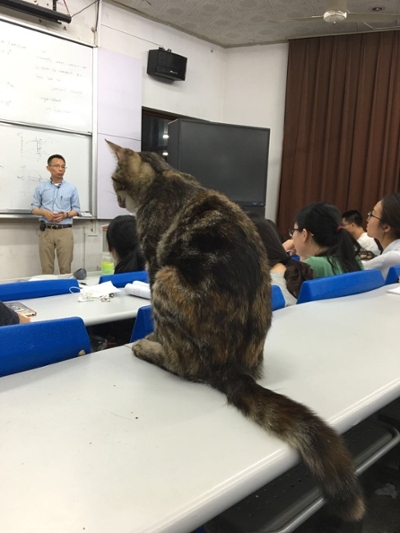
, Duflo, 2011), which I read in the Development Economics class at Reed. In the book, the authors make an extensive use of natural experiments to explore policy that could improve the wellbeing of poor people. The summer program stimulated my interested in this fast-developing field and I look forward to learning more about it in my future study.
Continue reading McGill Lawrence: Research and Training Program at SUFE
Summer Internship Award: The Business of Art
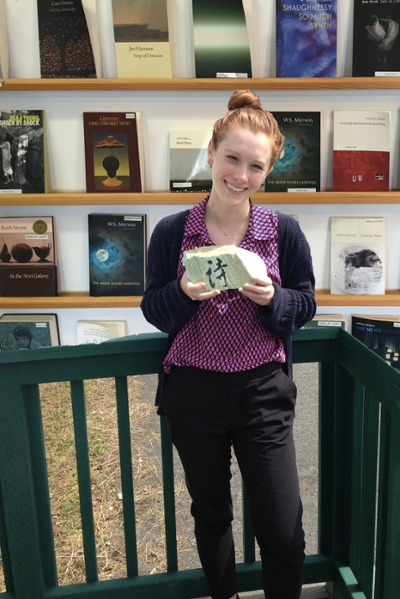
A photo collage of me on the front porch of Copper Canyon holding a rock with the logo on it, in front of a wall of our books
When I started as a production intern at Copper Canyon Press—which is probably the most acclaimed, completely independent, nonprofit publisher of poetry in the US—I wasn’t sure what I’d be doing. The staff told me that I had been selected to take on more responsibilities in the department of PRODUCTION, but I didn’t know exactly what that would entail. What I came to realize is that, although I had some specialized tasks, Copper Canyon overall offers one of the most holistic publishing internships. Unlike interning for one of the “Big Five Publishers” (conglomerates like HarperCollins, Penguin Random House, and MacMillian), where one would have to specialize in a specific department, interns at an independent publisher like Copper Canyon receive hands-on experience in all departments.
I, like many young people interested in books, thought that the most important step was in editorial, that most of the exciting work of poetry publishing happened during intimate work with author and language. And my assumption makes sense: I came directly from completing a Reed research thesis on poetry. Most of my immediate experience with poetry was as someone who engages intellectually with the text. But this isn’t what publishing is all about.
Continue reading Summer Internship Award: The Business of Art
PSF: An Insider Perspective on Microfinance
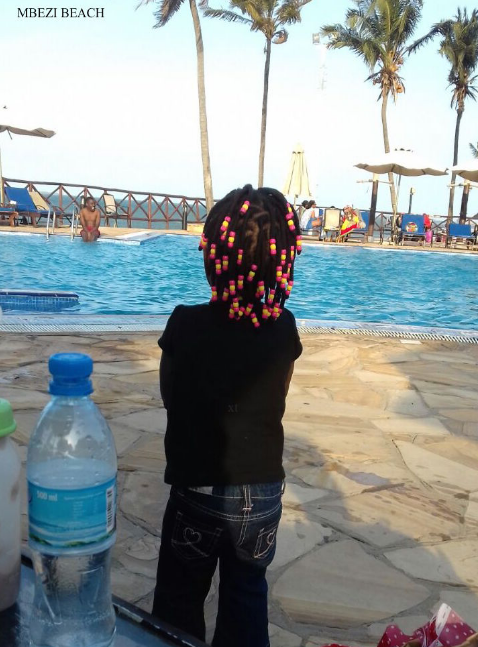
A beautiful photo of my coworker's daughter showing off her beautiful hair during a work retreat at Mbezi beach
“When we designed microcredit, the purpose was to help people get out of poverty, but some people moved away from that motivation.”
These words by Muhammad Yunus, who pioneered the concepts of microcredit and microfinance, have stayed in my mind the whole time during my internship in Dar es Salaam, Tanzania over the summer. Working as a Marketing and Loan Officer intern at African Microfinance Limited(AML) gave me a whole new perspective on how to approach the literature on microfinance in developing countries. Here is a list of things I learned from my experience.
Continue reading PSF: An Insider Perspective on Microfinance
PSF: Sense of Place in Spain, “El Botxo”*
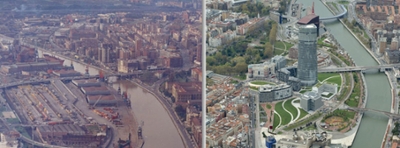
The riverside neighborhood of Abandoibarra, before and after Bilbao's transformation. Photo credit: Bilbao Ría 2000.
* “El Botxo” is a nickname for Bilbao, or more specifically the river valley that cradles the city. “Tx” makes a ch sound in Euskera (the language of the Basque people), so “Botxo” is pronounced “Bocho.
“The Bilbao you see today has nothing to do with the Bilbao I grew up in,” said the woman. “Nothing to do.”
Continue reading PSF: Sense of Place in Spain, “El Botxo”*
Summer Internship Award: Anti-Human Trafficking Work at San Diego ComiCon
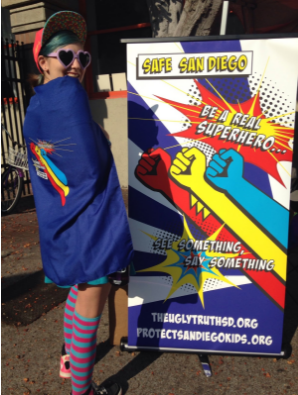
Being a “real superhero” (with a really cool cape) and working ComiCon 2016 to inform the public about the realities of Human Trafficking
Anti-Human Trafficking work is not one of those jobs you can just shake off when you get home. The facts and figures, the faces of victims and survivors, the ever-looming problems of running out resources even as more and more victims are identified - they’re like gnats constantly buzzing around your face. It’s hard not to get emotionally invested, to not want to lash out at people who seem like they’re indifferent. I came home emotionally drained and fuming from ComiCon this year, despite what my smiling face might show in the picture above. The blatant indifference, the callousness people treated me with when I tried to share my message infuriated me. When you find yourself a part of a powerful and global movement, you want to share that with the world. When they don’t listen, you want to scream.
Ten Things to Know About A U.S. Senate Internship
I wanted to intern with the Senate to get an inside look at our federal government, and dip my toes into real-life policy work. And thanks to a Summer Internship Grant from CLBR, and a grant from Senate’s SOS program, I’ve gotten to do all that, and more. But here’s all the stuff I didn’t expect.
Continue reading Ten Things to Know About A U.S. Senate Internship
McGill Lawrence: Trauma Research at the Oregon University of Health and Sciences
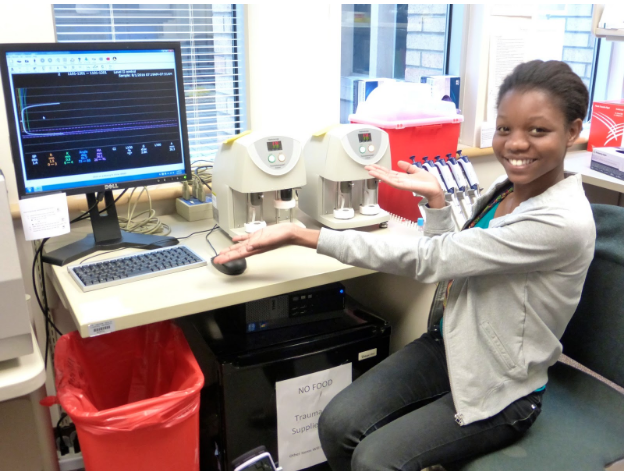
To me they look like tiny robots from a futuristic film made in the seventies. But these are the TEG machines, diagnostic instruments that help analyse bleeding and thrombotic risks through a whole blood assessment. It measures for example, how long blood takes to clot, how strong the clot is and how long the clot stays for. TEG machines are invaluable in the ICU because it helps the doctors and caregivers know whether a person is prone to too much blood clotting or thinning and will give them the necessary medication to counteract the condition.
For two months now, I have been participating in the Trauma Research Associates Program (T-RAP). The program is part of the Trauma Research Institute at the Oregon Health and Sciences University, OHSU, and is a yearlong commitment. I first heard about the program from my Chemistry professor Arthur Glasfeld, who mentioned that other students he had recommended for the program had found it a very good preparatory program for careers in the healthcare field. I am interested in public health, nursing, and environmental health and I hoped by participating, I would gain obtain valuable insights about these three fields and hopefully narrow down to one field that I can follow in Graduate school.
The research I am involved in focuses on traumas, people get seriously injured in car accidents, falls, or by gunshots etc. and are brought to the Emergency Department and ICU. These patients are at an increased risk of developing infections, blood clots, post traumatic stress disorders (PTSD) among others, these on top of very severe injuries or diseases that brought them into the hospital. We obtain information about their stay, and that will allow the team to determine factors that place people at higher risk for developing complications. For example in the PTSD study, we are investigating proteins involved in triggering the development of PTSD after an injury rendering some people more at risk than others.
There are people of diverse background in the team, ranging from chemistry to former art majors to salespeople. Thus besides the research opportunity, I was very excited to start because I knew that not only is the team involved in groundbreaking clinical research, they also have nurtured many individuals like me who have gone on to become medical students, nurses and other health professionals. I felt that I was going to be in a good environment to be tutored, and could not wait to be exposed to both the hospital floor and the research front. My expectations were far more exceeded by what I actually experienced at OHSU.
PSF: Deep Learning in Experimental High Energy Physics, CERN
I am a little over halfway into my stay at CERN (organisation européenne pour la recherche nucléaire). CERN is the largest particle physics research laboratory in the world and it is spread over two countries - France and Switzerland. There is a main campus that straddles the Franco-Swiss border and there are other facilities above ground, at certain places along the 27 km circumference of the Large Hadron Collider (LHC) which runs between 75-175 m beneath the French and Swiss countryside. The aerial picture below should give you an idea of the size scale of the LHC. The underground tunnel that houses the LHC is approximately 4 meters wide, accommodating many tens of thousands of pieces of equipment. This includes magnets for focusing and directing the particle beams, and cryogenic systems needed to maintain the temperature at about -456.25○ F, which is colder than outer space! CERN is famous for a number of the biggest particle physics discoveries over the past thirty or forty years, at the different experiments that were conducted here, and the creation of the World Wide Web, among other things. In recent times, it has also come into media prominence for the discovery of the Higgs Boson, at the LHC, and misplaced conspiracy theories that generally involve CERN scientists secretly planning to destroy the world.
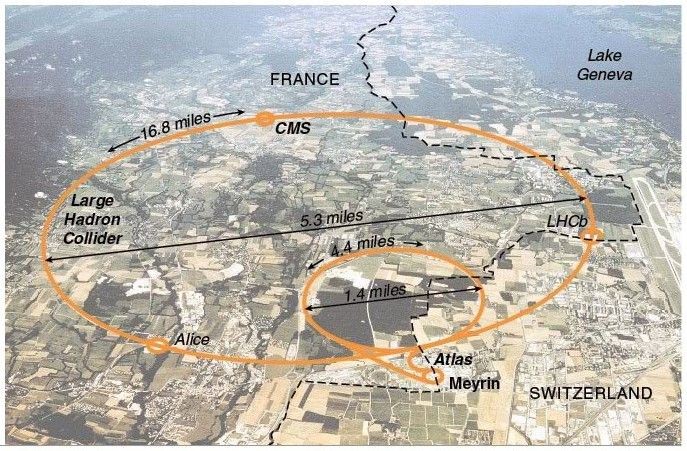
Aerial outline of the LHC tunnel
However, CERN is more than just the investments in researching physics phenomena, and constructing, improving and maintaining the particle colliders, accelerators, and other laboratory facilities. The people here are just as fascinating as any of the science that they are working on. In the summer months, a large fraction of the 13,000 or more people – users, students, research fellows, etc., associated with CERN are on site for work at the LHC and other experiments. These are some of the very best physicists, engineers and computer scientists in the world, and some of the smartest, funniest and most unpretentious people I’ve ever met. While it does get a little crowded in the summer months, it is a good time to be at CERN because of the huge influx of people from different countries and cultures, and the diversity that this naturally implies. Just sitting in the main cafeteria and talking to other summer students and researchers (including the occasional Nobel Laureate) is such a privilege because of how much you can learn from each conversation. I had never really appreciated the scale of the human endeavor that CERN is until I got here. During my time here, I have realized that no matter your title or rank, you are simply a cog in the giant machine that is CERN. However, each cog is really important! Irrespective of your age, gender identity, nationality or ethnicity, what you say and do will be taken seriously because if you are granted the privilege of working here, it is usually expected that you are capable enough to make a difference. It has been a humbling experience to work in such an environment.
Continue reading PSF: Deep Learning in Experimental High Energy Physics, CERN
PSF: Jasmine Williams '17, Teaching English in Myanmar (Burma)
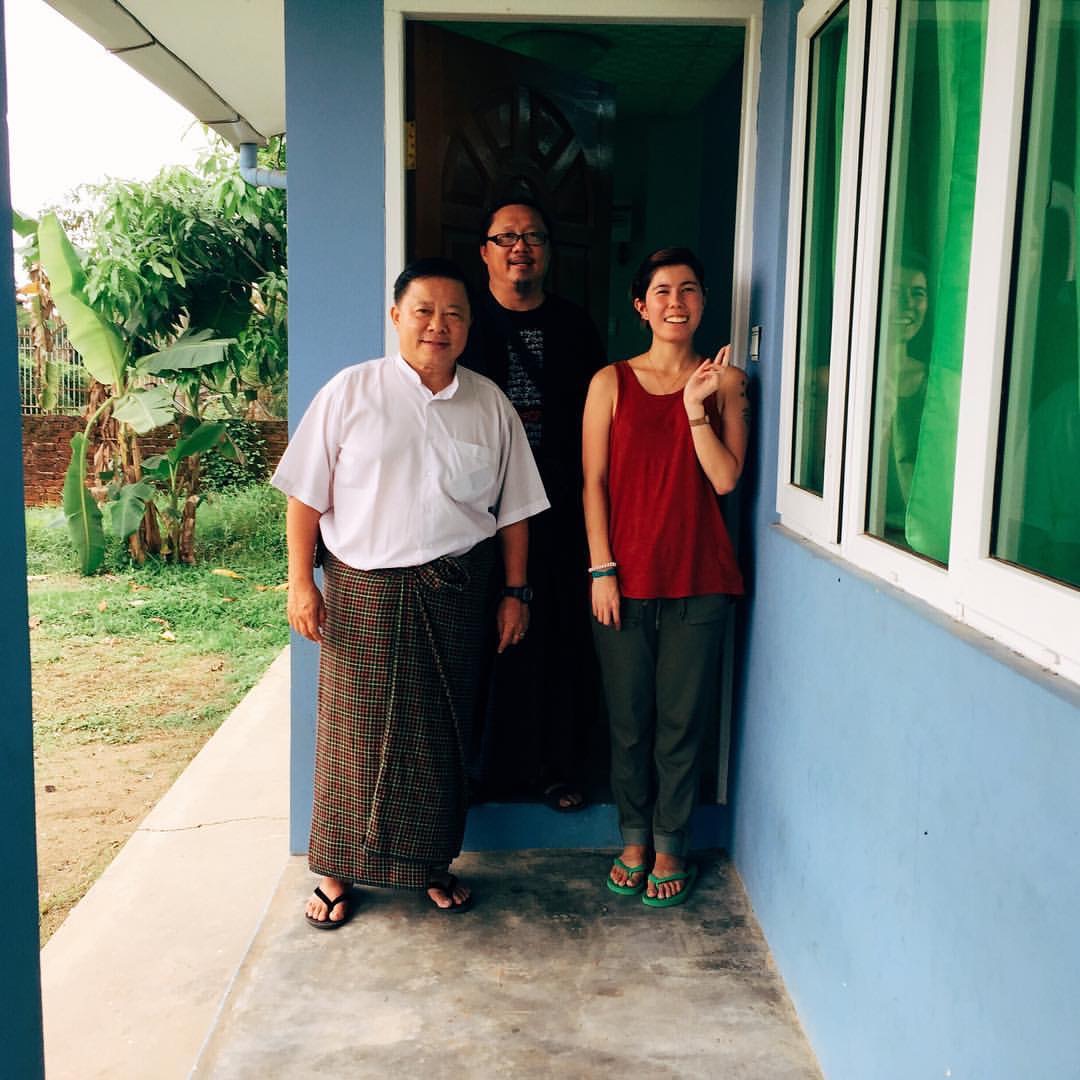
Jasmine Williams, senior english major and recipient of the President’s Summer Fellowship, reports in from Mingaladon Township, Myanmar, where she is spending the summer teaching English at a monastery and learning Burmese language and culture.
I've been at the monastery for a month or so now. I don't really know simply because I do not keep track of the date here. School in Myanmar begins during monsoon season in June, and ends before the summer in March. So I arrived at the perfect time to begin my teaching with my students' new school year. Learning English is a part of Myanmar's education standard, so I am here to work on the students pronunciation and conversation--they can read and comprehend written text quite well. I brought many books from America to start an English Language Library the the monastic school, and so the students who take an interest in pursuing the language further have the resources to do so.
I teach one class a day for about an hour, fourth to eight grade. I tutor twice a week with fifth and sixth grade students, and daily, I work with the novice monks to improve their English. As a man who has himself learned five languages, Sayadaw, my monk and mentor, is very intent on enhancing his students' English education in order for them to succeed in the new Democratic Government of Myanmar (yay Daw Aung San Suu Kyi!).
I've learned many things through my living and teaching here. Teaching ESL is very different than what I've done before. I think my biggest challenge is my lack of a Burmese vocabulary. So in the beginning or my teaching, I used many hand signals, props, and charade like gestures to communicate with my students. Now that my vocabulary is slightly larger, and now that my students are more adjusted to my American accent, I am able to better adjust to my students needs. The education system here is quite different than it is in The States, and some practices have been around since my mom was in grade school. So as my students adjust for me I must also adjust for them. In my spare time, I observe the other teachers and have conversations with them on what they think is lacking in the Myanmar education system. The teachers tell me what works best for their students, and what they would like to do to enhance their teaching. It has been a privilege to be able to talk with these teachers and to get to know them--I feel like I have really grown as a teacher and as a person, for our conversations help me expand my world view...I am learning to be a better teacher. I have been tutoring and teaching since I was in middle school, and currently I am a lead teacher with Reed's Science Outreach. It has been an amazing opportunity to further my pedagogical learning here--to see how other teachers teach their subjects in a place so different from The States.
I also visited Yangon university, and stepped inside the office that my grandmother used when she was a professor of history. I feel like I understand my family a little bit better. I feel like I understand myself better.
My days at the monastery are quite peaceful. When I'm not working with students, I read for my upcoming thesis--which, hopefully, will focus on literature written in or about Myanmar. I attempt to read and memorize Pali, and to work on my Burmese vocabulary--learning a second and third alphabet is quite difficult. My students like to make fun of my Burmese accent, and the other day I said "butt" instead of "lazy," but you know it's a process.
Continue reading PSF: Jasmine Williams '17, Teaching English in Myanmar (Burma)

